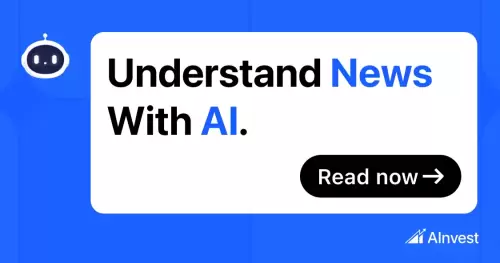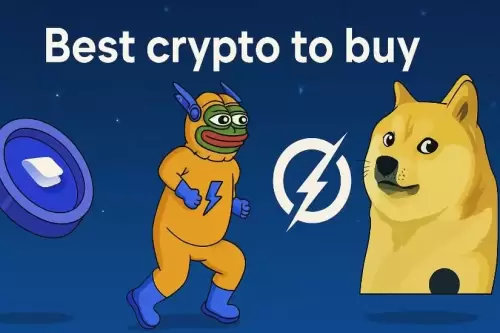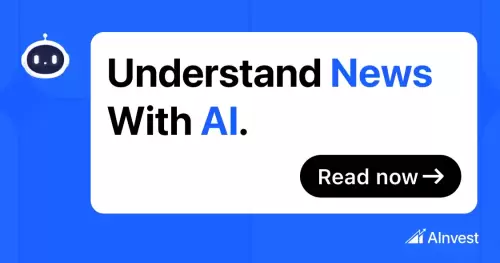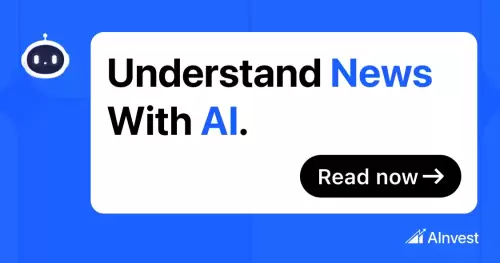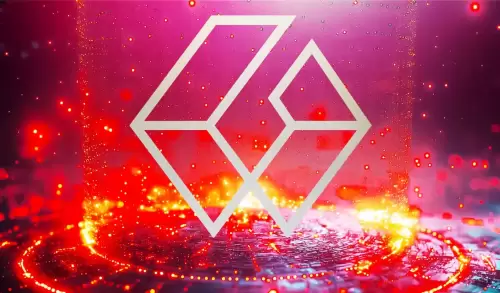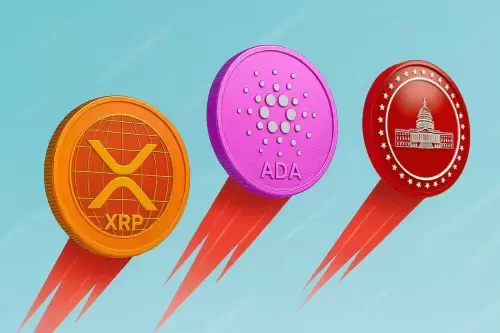 |
|
 |
|
 |
|
 |
|
 |
|
 |
|
 |
|
 |
|
 |
|
 |
|
 |
|
 |
|
 |
|
 |
|
 |
|
Nachrichtenartikel zu Kryptowährungen
title: DeFai: The Convergence of AI and DeFi
Jan 14, 2025 at 03:38 pm

output: Artificial intelligence (AI) has experienced a surge in popularity within the cryptocurrency industry, particularly on the Solana blockchain, where the integration of AI and memecoins has led to a market capitalization of $13.4 billion, comparable to some mature Layer 1 protocols such as Avalanche (AVAX) or Sui (SUI).
Over the past few months, we've witnessed the merging of two powerful technologies: AI and blockchain. From decentralized model training on the early Bittensor subnet to decentralized GPU/computing resource markets like Akash and io.net and the current wave of AI x memecoins and frameworks on Solana, each stage demonstrates how cryptocurrency can complement AI to a certain extent through resource aggregation, thereby achieving sovereign AI and consumer use cases.
In the first wave of Solana AI coins, some have brought meaningful utility beyond pure speculation. We’ve seen the emergence of frameworks like ai16z’s ELIZA, AI agents like aixbt that provide market analysis and content creation, or toolkits that integrate AI with blockchain capabilities.
In the second wave of AI, as more tools mature, applications have become the key value driver, and DeFi has become the perfect testing ground for these innovations. To simplify the expression, in this study, we refer to the combination of AI and DeFi as "DeFai".
According to Coingecko, DeFai has a market cap of about $1 billion. Griffian dominates the market with a 45% share, while $ANON accounts for 22%. This track began to experience rapid growth after December 25, and frameworks and platforms such as Virtual and ai16z experienced strong growth after the Christmas holiday.
This is just the first step, and the potential of DeFai goes far beyond this. Although DeFai is still in the proof-of-concept stage, we cannot underestimate its potential. It will use the intelligence and efficiency that AI can provide to transform the DeFi industry into a more user-friendly, intelligent and efficient financial ecosystem.
Before we dive into the world of DeFai, we need to understand how agents actually work in DeFi/blockchain.
Artificial Intelligence Agent (AI Agent) refers to a program that can perform tasks on behalf of users according to workflow. The core behind AI Agent is LLM (Large Language Model), which can respond based on its training or learned knowledge, but this response is often limited.
Agents are fundamentally different from robots. Robots are usually task-specific, require human supervision, and need to operate under predefined rules and conditions. In contrast, agents are more dynamic and adaptive, and can learn autonomously to achieve specific goals.
To create more personalized experiences and more comprehensive responses, agents can store past interactions in memory, allowing the agent to learn from the user’s behavioral patterns and adjust its responses, generating tailored recommendations and strategies based on historical context.
In blockchain, agents can interact with smart contracts and accounts to handle complex tasks without constant human intervention. For example, in simplifying the DeFi user experience, including one-click execution of multi-step bridging and farming, optimizing farming strategies for higher returns, executing transactions (buy/sell) and conducting market analysis, all of these steps are completed autonomously.
According to @3sigma’s research, most models follow 6 specific workflows:
1. Data Collection
First, models need to understand the environment in which they work. Therefore, they need multiple data streams to keep the model in sync with market conditions. This includes: 1) On-chain data from indexers and oracles 2) Off-chain data from price platforms, such as data APIs from CMC/Coingecko/other data providers.
2. Model Reasoning
Once models have learned the environment, they need to apply this knowledge to make predictions or actions based on new, unrecognized input from the user. Models used by agents include:
3. Decision Making
With trained models and data, the agent can take action using its decision-making capabilities. This includes interpreting the current situation and responding appropriately.
At this stage, the optimization engine plays an important role in finding the best results. For example, before executing a profit strategy, the agent needs to balance multiple factors such as slippage, spread, transaction costs, and potential profits.
Since a single agent may not be able to optimize decisions in different domains, a multi-agent system can be deployed to coordinate.
4. Hosting and operation
Due to the computationally intensive nature of the task, AI agents often host their models off-chain. Some agents rely on centralized cloud services such as AWS, while those that prefer decentralization use distributed computing networks such as Akash or ionet and Arweave for data storage.
Although the AI Agent model runs off-chain, the agent needs to interact with the on-chain protocol to execute smart contract functions and manage assets. This interaction requires a secure key management solution, such as an MPC wallet or a smart contract wallet, to process transactions securely. Agents can operate through
Haftungsausschluss:info@kdj.com
Die bereitgestellten Informationen stellen keine Handelsberatung dar. kdj.com übernimmt keine Verantwortung für Investitionen, die auf der Grundlage der in diesem Artikel bereitgestellten Informationen getätigt werden. Kryptowährungen sind sehr volatil und es wird dringend empfohlen, nach gründlicher Recherche mit Vorsicht zu investieren!
Wenn Sie glauben, dass der auf dieser Website verwendete Inhalt Ihr Urheberrecht verletzt, kontaktieren Sie uns bitte umgehend (info@kdj.com) und wir werden ihn umgehend löschen.
-

-

-

-

- Crypto, Phishing und Ihre Brieftasche: Ein New Yorker -Leitfaden zum sicheren Auftritt
- Aug 03, 2025 at 09:27 am
- Phishing -Angriffe entwickeln sich weiter und Ihre Krypto -Brieftasche ist ein Hauptziel. Erfahren Sie, wie Sie Ihre digitalen Vermögenswerte vor anspruchsvollen Betrug und langfristigen Bedrohungen schützen können.
-

- Troller Cat Meme Coin Vorverkauf steigt: Ein neuer König im Krypto -Dschungel?
- Aug 03, 2025 at 09:25 am
- Der Vorverkaufserfolg von Troller Cat ist es, die Köpfe zu drehen! Ist diese Meme -Münze die nächste große Sache oder nur ein weiterer Blitz in der Pfanne? Tauchen Sie ein, um herauszufinden, warum es schwebt.
-

-

-

-























































